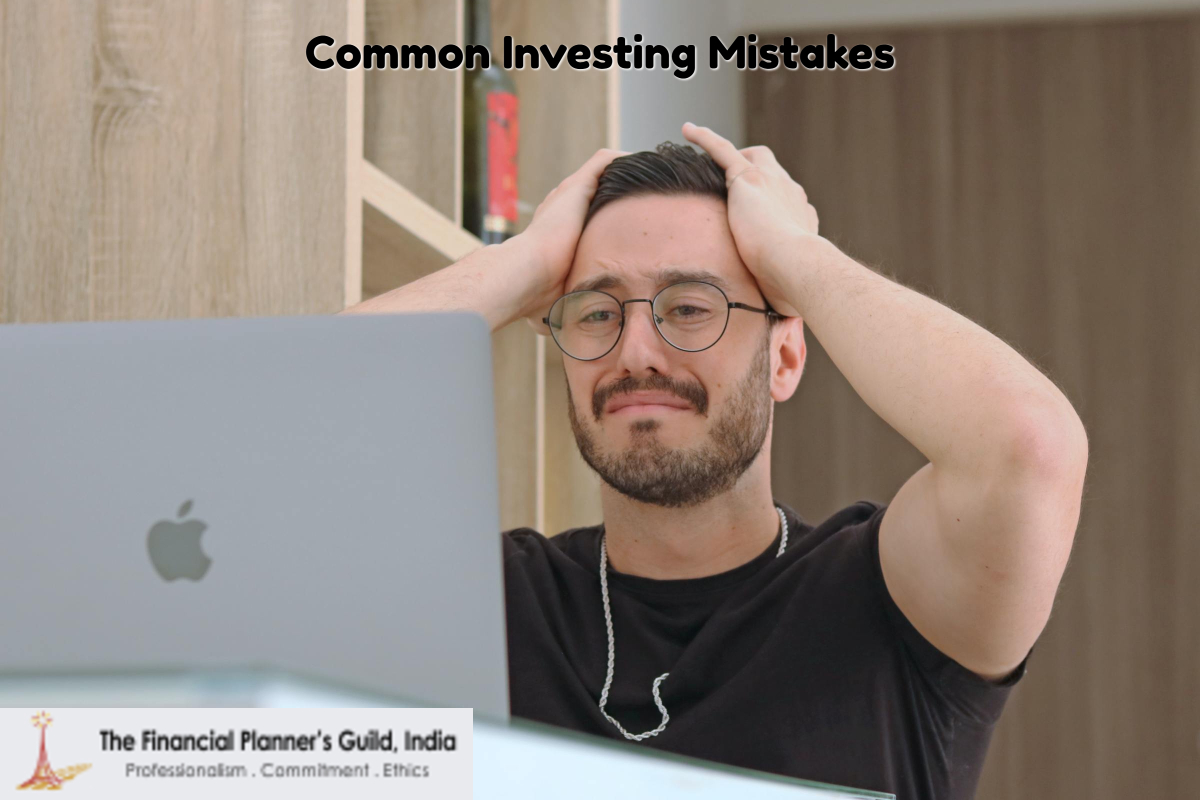
You must have read common investing mistakes part 1 and part 2 earlier. If not, kindly take the time to go through them now.
This is the third and final part of the series.
1. Not Rebalancing
Once you allocate your assets as per your circumstances, it’s important to re-balance your portfolio at least once a year. As the price of equities goes up or down, the ratio that you have established will change. If the value of your equities has risen, you may want to sell off some of them to restore your original ratios. If their value has dropped, moving more cash into equities may be appropriate. For rebalancing strategy to work, you must own assets that don’t react the same way over differing market conditions. Rebalancing is difficult because it forces you to sell the asset class that is performing well and buy more of your worst performing asset classes. This contrarian action is very difficult for many investors. But if you can rebalance religiously, you will reap the long-term rewards.
2. Ignoring Diversification
Allocating investments to different asset classes is the initial layer of diversification. You then need to diversify within each asset class. For example, this means exposure to large-cap, mid-cap and small-cap stocks. Spread your investment money around. Like asset allocation, it takes many investors a long time to realize how diversification helps to reduce risk and enhance performance. The diversification mix that is right for you at a given point in your life will depend on various factors like your age and your tolerance for risk.
3. Extreme Diversification
Investors, at times, take wise advice to extremes. Some investors have a tendency to update monthly spreadsheet to track more than a dozen brokerage accounts, funds, bank deposits, and other holdings. “Don’t put all your eggs in one basket” is their explanation, which is a wonderful concept but wrongly applied. Some people maintain different bank accounts, each earmarked for a different purpose, from home to car expenses. Simplification is actually safer and more secure.
4. Not Paying Attention to Expense Ratios
The costs of owning a fund is called the expense ratio. Not many investors realize how badly expense ratios can affect their investment performance. You might think it’s only 1% and there won’t be a big impact on your portfolio returns. But, if you do some calculations, you will be shocked to learn that a difference of 1% can lower your investment performance by 25% over the course of 30 years. Talking in numbers, instead of ending up with Rs. 1 crore, you might only have Rs. 75 lacs after 30 years. So, if you’re investing for the long-term, pay close attention to the expense ratio. It’s often a better choice to choose the low-cost, boring index fund over a high-cost actively managed mutual fund.

5. Deviating from Your Investment Objective
Another big mistakes investors make is not sticking to their original investment strategy. Do not let yourself get diverted by a hot tip, a sudden trend or a sudden down market. Fluctuations in the market are a natural part of economic cycle. When the market is in a downturn it may seem logical to cash out and go home, but before you do that you should think about your long-term financial goals.
6. Losing Money!
Remember Warren Buffet words “The first rule of investing is don’t lose money; the second rule is don’t forget Rule No. 1.” The hardest thing in investing is recovering from a loss. It takes a 100% gain to recover from a 50% loss. So never lose money! And though you can’t always avoid it, you can certainly minimize the chances of your hard-earned money being lost in the market.
7. Selling Winners and Keeping Losers
This is another common weakness of many investors. Most of them believe in the concept of ‘buy low and sell high’ and end up selling a lot of winner investments in order to book profits, but held on to losers as no one wants to sell at a loss. It happens because we humans have a tendency to sell the winners and keep the losers hoping for a sunnier day. As a result, you end up with a bunch of poorly performing stocks and no winners in the portfolio to balance it out.
8. Ignoring Taxation Impact
Lastly, taxes play an important role in investment planning. Different investments are taxed differently. Involve a qualified financial planner to handle taxation in your investment planning process. Taxes can take a big bite out of your investment returns – and may start taking an even large bite in the future.
To conclude, of the above-mentioned mistakes made by investors, many of them are repeat offenses. In fact, investors have been making these same mistakes since the dawn of modern markets, and will likely be repeating them for years to come. Investors who recognize and avoid these common mistakes give themselves a great advantage in meeting their investment goals. Most of the solutions discussed above are not exciting, and they don’t make great cocktail party conversation. However, they are likely to be profitable in the long-run.
Not many investors realize how badly expense ratios can affect their investment performance. You might think it’s only 1% and there won’t be a big impact on your portfolio returns. But, if you do some calculations, you will be shocked to learn that a difference of 1% can lower your investment performance by 25% over the course of 30 years. Talking in numbers, instead of ending up with Rs. 1 crore, you might only have Rs. 75 lacs after 30 years. So, if you’re investing for the long-term, pay close attention to the expense ratio. It’s often a better choice to choose the low-cost, boring index fund over a high-cost actively managed mutual fund.
FPG India ©2024. All Rights Reserved.
Designed & Developed by W3M Technoz